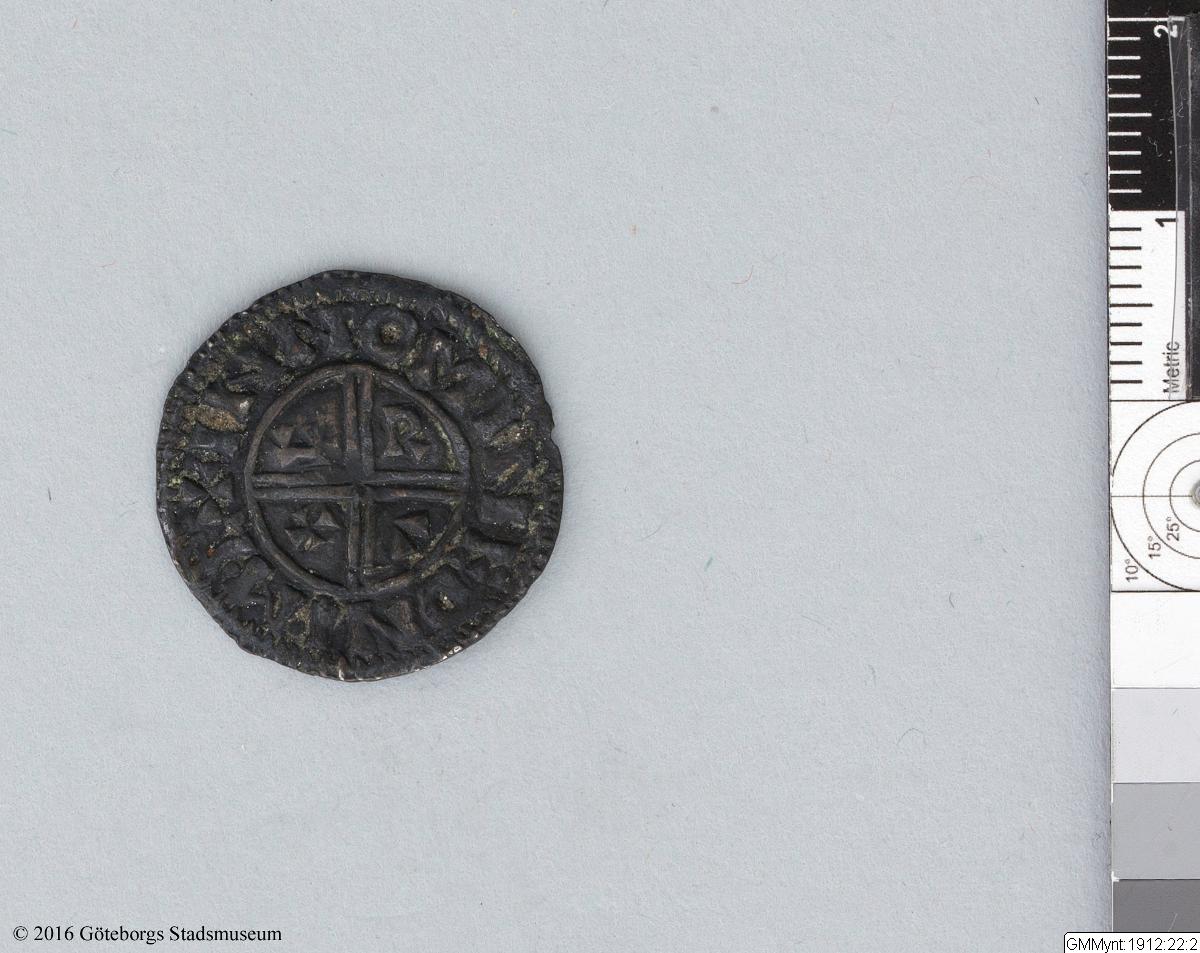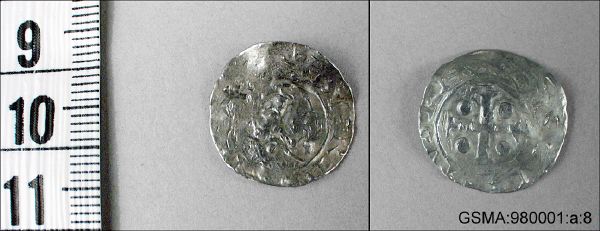
About 2,000 years ago the first coins came to Sweden from other countries. They continued to come for a thousand years: Roman, Byzantine, Frankish, Arabian …Throughout this time period, Swedes weighed the coins and treated them like any other silver or gold pieces. If smaller pieces were needed to make a payment, the coins were simply cut up.King Olof Skötkonung ordered the first Swedish coins to be struck in about the year 995. The king or queen controlled the nation’s coin production and chose the coins’ appearance and value. As a result, many coins feature the king or queen’s portrait.
‘Olof Skötkonung is usually called Sweden’s first Christian king. His first coins bore the words “Olof, kung i Sigtuna” (Olof, King in Sigtuna) after the place where the coins were made. Later coins say “Olof svearnas kung” (Olof, King of the Swedes”), showing the king’s ambition to expand his kingdom. Because the coins were used throughout the kingdom, they also functioned as an information channel. As a form of early propaganda, the coins showed who ruled the country. When they featured images of Christian motifs they also spread the new religion.
The artisans who King Olof brought in to make the first Swedish coins came from England and the names of the coins were also adopted. The English word “pennies” became the Swedish word penningar – today’s word for money, pengar. The first Norwegian and Danish coins were also produced at about the same time. The Scandinavian coins copied the picture of the English king but used the names of the Swedish,
Norwegian and Danish kings.’Olof Skötkonung is usually called Sweden’s first Christian king. His first coins bore the words “Olof, kung i Sigtuna” (Olof, King in Sigtuna) after the place where the coins were made. Later coins say “Olof svearnas kung” (Olof, King of the Swedes”), showing the king’s ambition to expand his kingdom. Because the coins were used throughout the kingdom, they also functioned as an information channel. As a form of early propaganda, the coins showed who ruled the country. When they featured images of Christian motifs they also spread the new religion.
The artisans who King Olof brought in to make the first Swedish coins came from England and the names of the coins were also adopted. The English word “pennies” became the Swedish word penningar – today’s word for money, pengar. The first Norwegian and Danish coins were also produced at about the same time.
The Scandinavian coins copied the picture of the English king but used the names of the Swedish, Norwegian and Danish kings.

2101
Olof Skötkonung’s penning
One of the first Swedish coins, a penny. It is a round silver coin that Olof Skötkonung had made sometime between the years 995 and 1018.

2102
The Fyrunga silver treasure
In 1951 a treasure was discovered in Fyrunga on the Vara plain in Västergötland. Farmer Bruno Carlsson had ploughed his field in the spring and saw something that glittered in the earth.